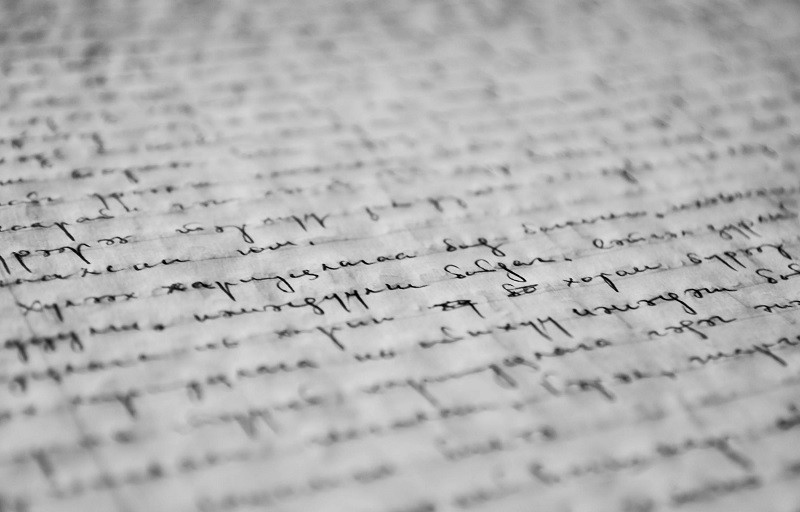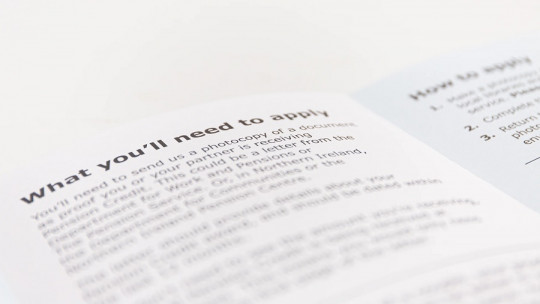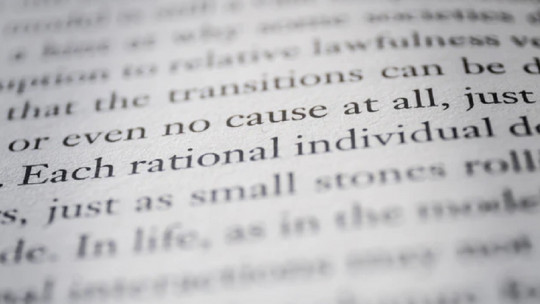When capturing information, you can choose between a series of structures, depending on the author’s objective.
One of these possibilities is known as inductive structure We are going to carefully analyze what this modality consists of, what its characteristics are, how it differs from other possible models, and we will even see some examples with which we can better understand this information.
What is an inductive structure?
When we talk about inductive structure, we are referring to the way of ordering a series of data, that is, information, throughout a speech, story or text. This form of structuring is based on induction, a concept that we must properly define in this introduction in order to better understand the topic at hand.
Induction, or inductive reasoning, is a way of reasoning in which A series of premises are first analyzed to try to reach a conclusion that, although it is based on the first ones, does not offer absolute certainty about its veracity. That is, we know that this conclusion is true for all the premises analyzed, but we cannot be sure that it is applicable for those that we do not know.
Another way of describing induction, which is the basis of the inductive structure, as we have already seen, would be that reasoning that starts from the most particular, that is, from concrete and known cases, to try to arrive at general considerations for everyone. the cases. As we have said, we can only be convinced that these considerations apply to the known cases, but not to the rest.
To illustrate this issue with an example, we can think about the discovery of a new species of animal, say, a rodent. Researchers studying this new species could observe a series of premises, related to the hair color of each specimen found, which could be brown in all cases. Through induction, they could conclude that all members of that species would be brown.
This reasoning is of an inductive type, since the conclusion reached is valid with absolute certainty only for the known cases (the premises) , that is, for the specimens that have been studied. But researchers could not guarantee that a new specimen of such a rodent would suddenly be found whose fur was a different color, for example, white. This will help us to later understand the implications of the inductive structure.
In that case, the conclusion would no longer be valid and a different one would have to be reached, for example, that members of that species have either brown or white hair. As before, this conclusion would continue to be valid for the known premises, so if a new one were introduced, such as that specimens with black fur have been observed, once again, a new conclusion would have to be established, updated based on of the known data: the fur of this animal can be brown, white or black.
Features of the inductive structure
In the introduction we have been able to observe an example of induction that will help us understand the characteristics of the inductive structure. In this case, It is about applying this form of reasoning to the structure of a text
Next, we will compile some of the fundamental features of this writing style, the main characteristics by which we can identify a text with an inductive structure.
1. Premises first, conclusion last
As we observed in the previous example, there is a basic characteristic in induction that is transferred to the inductive structure. It is none other than the order of the elements that will be needed in the text in order to transmit the message that the writer intends to convey to the readers.
In that sense, It will be essential that the author begins by establishing the entire series of premises on which he will base the reasoning In that part of the text, the writer must make clear all the data that he will need, since an inductive structure requires that all this information be located at the beginning of the writing.
After listing all those specific cases, examples or data that are known regarding the topic that the author is analyzing, we can move on to the next point, which is the compilation of the information that has appeared in the specific examples, in order to be able to synthesize the data and reach the final step.
The last step of the inductive structure is none other than the conclusion At that point, the author of the text will present what is concluded from all the cases studied in the previous points. It is essential to remember that this conclusion, being based on inductive reasoning, is true for the examples studied, but we cannot guarantee that it is true for those we do not know.
Therefore, this conclusion will have the category of certainty regarding the cases from which it has been established, but the author will not be able to venture to extend it to other examples or situations, at least not with the absolute certainty that such a conclusion would continue to be true. and as has been observed.
If new data is found, the conclusion reached in said writing should be updated through a new text that takes into account the discovery made in order to maintain validity.

2. Dialogue between the writer and the reader
Unlike other texts, the inductive structure gives rise to active participation of the reader, establishing a kind of dialogue with the data that the author gradually offers throughout the writing. Logically, it can also be read passively, but in order to properly understand the reasoning that is being carried out, it is advisable to pay attention, with an awake mind.
Only in this way can we accompany, as readers, on the path that the writer is showing us, thus understanding the information with which we start and the reflections that we must make to reach the final conclusions that are established, and that are applicable to the information that has been offered to us at the beginning.
If this process is followed, the reader who has before him a text with an inductive structure, You will be able to reach the conclusion at the same time as the writer, because you will have accompanied him indirectly throughout the reasoning Likewise, you will be able to tell if the author has made a mistake and has overlooked any detail that invalidates the conclusion he or she has reached.
In this way, reading becomes a participatory act, in which we can become researchers for a moment and put together the pieces of the puzzle to make a judgment that is appropriate for the information initially collected.
3. Funnel structure, from disorder to order
Another characteristic of texts with an inductive structure is precisely the funnel system in which they present the information. From this perspective, we could observe that At the beginning of the text there would be the wide part of the funnel, the most disordered part would be, consisting of all the information, apparently unconnected
It is at the beginning of the text where all the premises are located, as we have already seen. Each of them will provide a series of data, but at this moment it may not be too obvious what relationship could be established between all of them. To do this, it is necessary to continue advancing through inductive reasoning, or what is the same, the funnel, from its widest part to the thinnest part.
Halfway through, we would find the second point, where all the data has been ordered , in order to establish relationships between them. At this point we would find ourselves in the middle of the funnel, and the initial disorder would begin to turn into order, but it would still be early to reach the final result.
To do this, you must continue advancing along the path of the inductive structure, and therefore reach the narrowest part of the funnel, which represents the end of the path. It is there where Finally, a synthesis of all the disordered information has been made, the corresponding relationships have been established and therefore, the author or researcher is in a position to establish a conclusion or conclusions on the topic studied.
We observe, therefore, how the funnel serves as a simile to understand how it is possible to establish a reasoning based on a series of particular cases and be able to draw the generalities that are hidden behind all the data obtained, obtaining the conclusion that applies to all of them. , although we do not know if it does so on the examples that we do not know.









